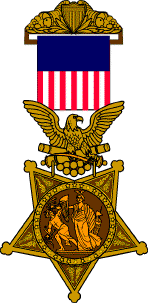Charles E. Capehart
| Charles E. Capehart | |
|---|---|
 | |
| Born |
1833 Johnstown, Pennsylvania |
| Died |
1911 (aged 77–78) Washington D.C. |
| Place of burial | Arlington National Cemetery |
| Allegiance |
Union |
| Service/branch |
Union Army |
| Years of service | 1861 – 1865 |
| Rank |
|
| Commands held |
|
| Battles/wars |
American Civil War • Battle of Gettysburg • Fight at Monterey Pass |
| Awards | Medal of Honor |
Charles E. Capehart (1833 – 1911) was an officer in the U.S. Cavalry during the American Civil War. He received the Medal of Honor for action following the Battle of Gettysburg on July 4, 1863.
Military service
Capehart enlisted in the Union Army and was commissioned captain and placed in command of Company A, 1st West Virginia Cavalry. He was subsequently promoted to major of the regiment. Major Capehart assumed command of the 1st West Virginia during the Battle of Gettysburg when Colonel Nathaniel Richmond was promoted to brigade commander. On July 4, 1863 Capehart's regiment, in a daring midnight charge down a mountainside during a thunderstorm, attacked and captured a retreating Confederate wagon train. This act would lead to the awarding of the Medal of Honor.
Capehart was later promoted to lieutenant colonel. His brother, General Henry Capehart was also awarded the Medal of Honor for his actions in the Civil War.
Medal of Honor citation
For The President of the United States of America, in the name of Congress, takes pleasure in presenting the Medal of Honor to Major Charles E. Capehart, United States Army, for extraordinary heroism on 4 July 1863, while serving with 1st West Virginia Cavalry, in action at Monterey Mountain, Pennsylvania. While commanding the regiment, Major Capehart charged down the mountain side at midnight, in a heavy rain, upon the enemy's fleeing wagon train. Many wagons were captured and destroyed and many prisoners taken.
Date of Issue: April 7, 1898
Action Date: July 4, 1863
See also
Notes
External links
- "Charles E. Capehart". Claim to Fame: Medal of Honor recipients. Find a Grave. Retrieved September 4, 2010.
- "Arlington National Cemetery Website". Retrieved September 24, 2010.
- "Charles E. Capehart". Hall of Valor. Military Times. Retrieved September 4, 2010.